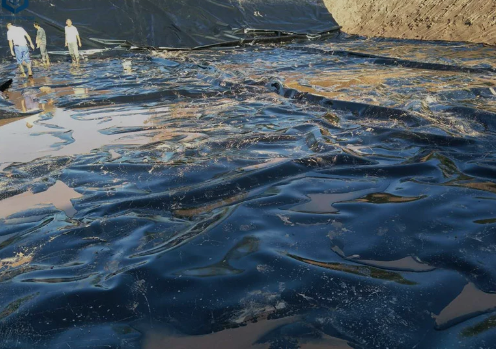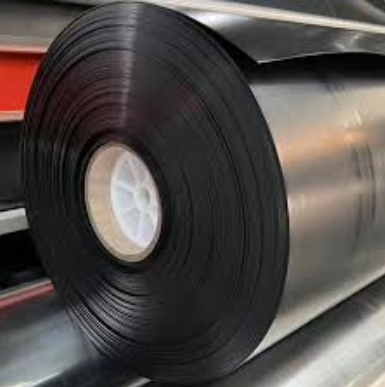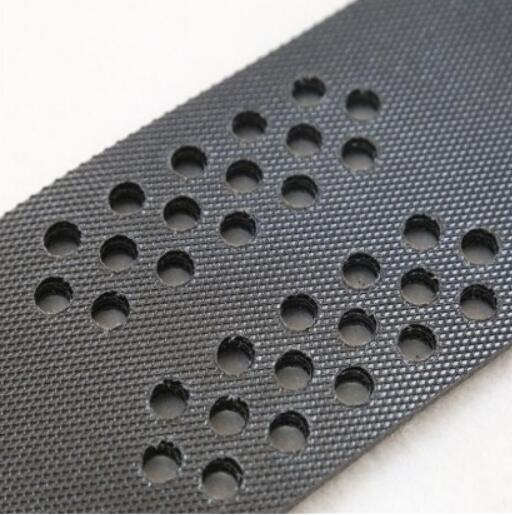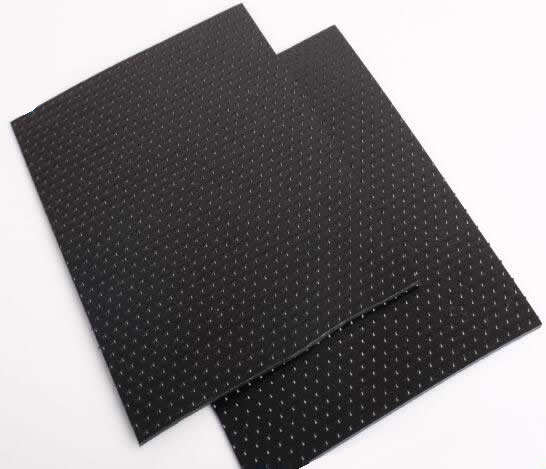- Understanding the Role of Geomembrane Liners in Waste Management
- Innovations in Geomembrane Liners for Water Management
- Geomembrane Liners: A Comprehensive Guide
- The Future of Geomembrane Liners in Civil Engineering
- Geomembrane Liners: Enhancing Landfill Stability
Manager:Alvin Wang
WhatsApp:+62 8983806051
Tel:+86 10-5797-1075
Email:steelwang@okorder.com
Address:3rd Floor, No.2 Building, No.1 Sanlihe Road
What is the most widely used geomembranes in current use?
In modern civil engineering and environmental projects, we have to use geomembranes due to their significance as containment solutions for a variety of purposes. One of the most commonly utilized and flexible geomembranes is High-Density Polyethylene (HDPE) geomembranes among various kinds of geomembranes. The discussion will focus on the cause of popularity of hdpe Geomembranes as well as their applications, advantages, and factors contributing to its extensive use in today’s projects.

Introduction to HDPE Geomembranes
HDPE geomembranes are man-made liners made from high-density polyethylene resin which is a thermoplastic material known for its excellent durability, flexibility and impermeability. These geomembranes are produced by the process called extrusion which means melting the resin and molding it into thin sheets with different thicknesses. These are barriers designed to stop fluid migration and environmental contamination in containment systems like landfills, ponds, reservoirs, or at wastewater treatment plants.
Applications of HDPE Geomembranes
HDPE geomembranes are used for many types of civil engineering, environmental, and geotechnical tasks thanks to their versatile nature combined with endurance as well as performance features.
Some common applications include:
1. Liners for Landfills: To avoid leachate migration into soil or groundwater around municipal solid waste landfills, hazardous waste landfills and industrial landfills usually use HDPE liners extensively. The impermeable nature of HDPE acts as a barrier that helps contain any hazardous substances so that they do not become pollutants in our environment.
2. Ponding or Reservoir Lining: Agricultural industries industrial sectors hotels resorts or even other regions may find themselves using these special liners for ponds reservoirs where water may be stored temporarily or permanently. Water seepage control is an important function provided by these liners that ensures water quality in these reservoirs and supports aquaculture, irrigation, water supply etc.
3. Wastewater Treatment Facilities: HDPE geomembranes are used for constructing wastewater treatment plants, lagoons and containment basins providing secondary containment for sewage and industrial effluents. They can also contain corrosive substances since HDPE geomembranes are chemically resistant and impermeable to groundwater hence protecting it from contamination.
4. Mining and Containment Ponds: Mine waste materials as well as chemical runoffs in tailings ponds heap leach pads or containment basins are safely managed by using HDPE liners during mining operations. In this regard, these synthetic membranes help reduce environmental impacts, ensure that water resources are not polluted, and meet regulatory requirements.
5. Secondary Containment: Examples include aboveground or underground storage tanks, chemical storage facilities at industrial plants where high density polyethylene is also employed thus being used in secondary containment systems. For example leaks spills besides environmental releases may be prevented with the help of extra protection layer provided by these membranes minimizing risks posed to ecosystems communities and workers.
Benefits of HDPE Geomembranes
Some of the major benefits which give rise to the extensive use of HDPE geomembranes today include:
1. Durability: It is characterized by durability as well as resistance to punctures damages caused by UV light chemicals among others [adjective] which is usually attached to HDPE geomembranes (Lappi 2002). They can withstand anything that comes their way like tough weather conditions without losing their integrity because they have been made strong enough.
2. Flexibility: As a result flexibility has been another key feature associated with high-density polyethylene synthetic membrane materials used in such applications as landfill liners (Gupta 2010). Thus such features enhance installation process while ensuring good sealing within containers due to adaptability on earth moving sites where irregularities are unavoidable thereby making these liners suitable for use.
3. Chemical Resistance: HDPE geomembranes are acknowledged for a high resistance to a wide range of chemicals such as acids, alkalis, solvents and hydrocarbons. This chemical resistance also makes HDPE geomembranes appropriate for retaining dangerous substances, industrial chemicals, and wastewater even under different environment settings.
4. Impermeability: Because they have low permeability to liquids and gases, HDPE geomembranes make good barriers against fluid migration and environmental contamination. There can be no leakage, seepage or groundwater pollution due to this impermeability which makes sure that containment systems remain integral and efficient.
5. Longevity: Compared with other geomembrane materials HDPE geomembranes have long life spans in relation to their maintenance requirements. The ability of these materials to resist aging, degradation and other environmental conditions makes them perform reliably over long periods in containment applications thereby reducing the lifecycle costs thus promoting sustainability.
Factors Contributing to Widespread Use
Several key factors contribute to the widescale use of HDPE geomembranes in the modern civil engineering projects as well as environmental projects:
1. Versatility: Different containment needs can be met using a custom made HDPE geosynthetic membrane with varying widths including various thicknesses as well as roll lengths that allows for design flexibility during its manufacture.
2. Cost-Effectiveness: Moreover, their relatively cheap installation and maintenance costs vis-à-vis their durability is one main reason why engineers prefer them over alternatives such as concrete, clay or asphalt when designing water or liquid waste containment facilities
3. Regulatory Compliance: Due to regulatory compliance issues concerning both safety guidelines along environmental regulations in terms of performance criteria put forth by regulatory agencies globally; therefore, it is better using those products since they adhere on such stipulated criteria.
4. Proven Performance: A myriad of field trials carried out across diverse global climatic conditions has managed to display consistent strength levels of HDPE (High Density Polyethylene) geomembranes in different environmental areas.
5. Advancements in Technology: As a result, the advancements further broadened the range of applications and enhanced reliability of HDPE geomembranes as containment systems.

Conclusion
Finally, HDPE geomembrane is one of the most commonly used and adaptable materials for geo-synthetic membranes in present-day civil engineering projects and environmental tasks. Given their durability, flexibility, chemical resistance, impermeability and cost effectiveness it has been no surprise that they are preferred in diverse settings such as pond liners, landfill liners, wastewater treatment facilities among others. Their success can be attributed to factors like regulatory compliance to set standards related to containment and environment conservation, improved technology, versatility among other things thus making them beyond doubt an important part of today’s engineering and environmental solutions.
- Previous:How thick is a HDPE geomembrane?
- Next:What is the difference between HDPE and LLDPE geomembrane?
-
2024-12-05Geomembrane Liners: A Comprehensive Guide






